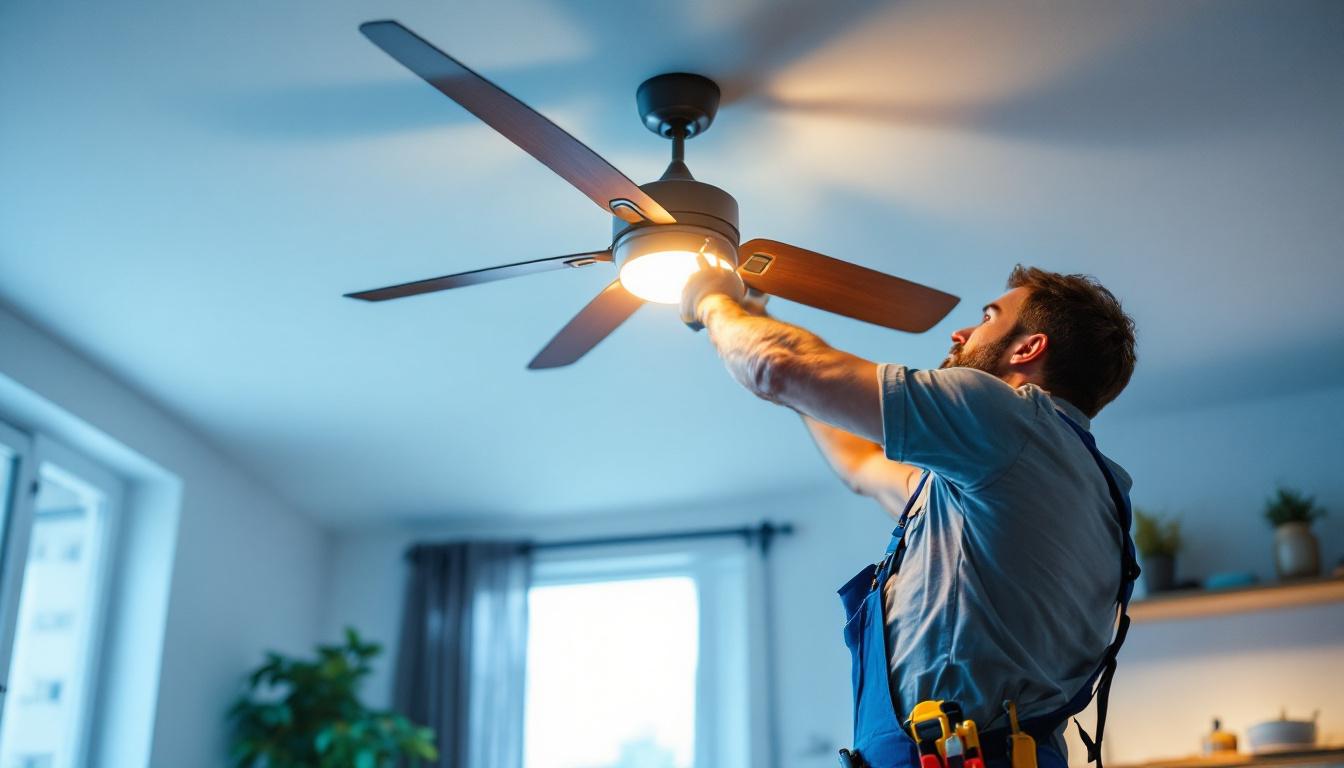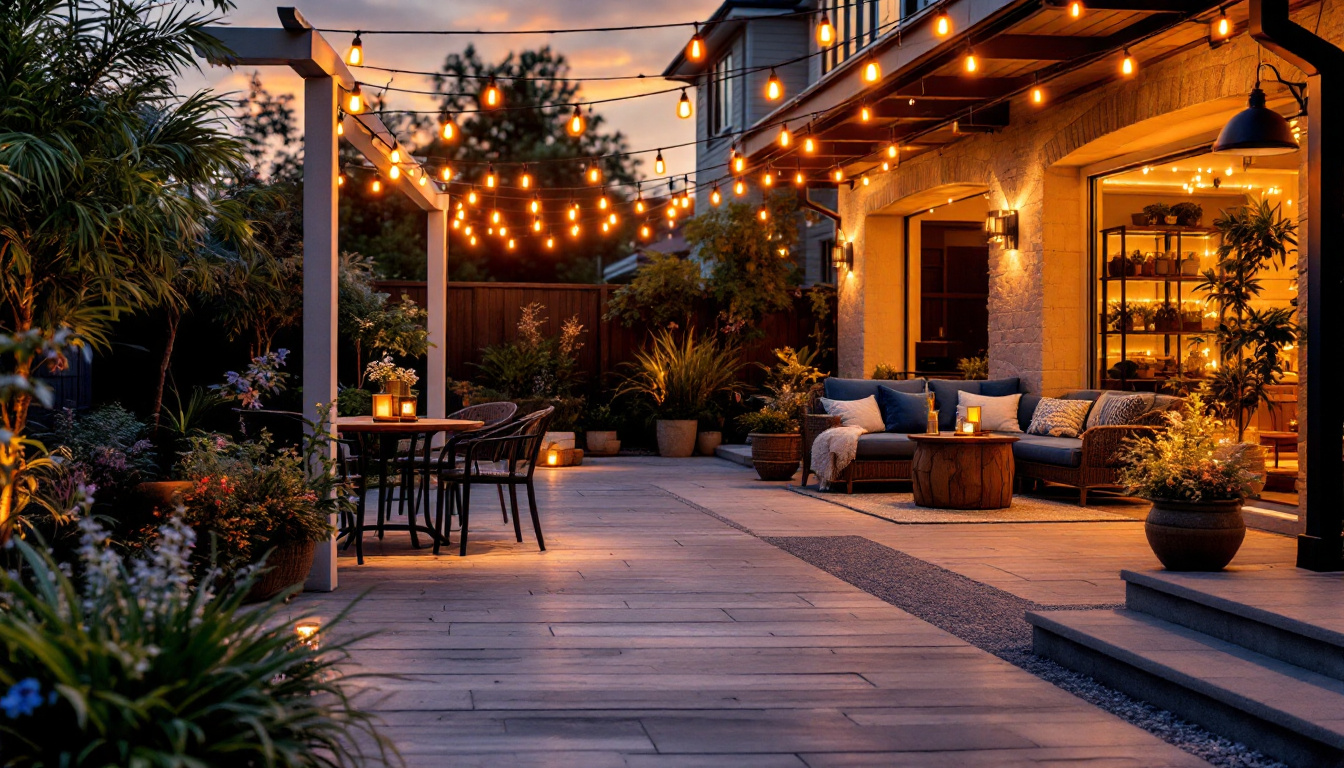
In the ever-evolving landscape of lighting technology, remote control pot lights have emerged as a game-changer for lighting contractors. These innovative fixtures not only enhance the aesthetic appeal of spaces but also offer significant cost-saving opportunities. Understanding how these systems work and their benefits can empower contractors to make informed decisions that ultimately lead to increased profitability.
Remote control pot lights, also known as recessed lighting, are fixtures installed into the ceiling, providing a sleek and modern look. The ability to control these lights remotely adds an extra layer of convenience and efficiency, making them an attractive option for both residential and commercial projects.
One of the standout features of remote control pot lights is their versatility in design and functionality. They can be integrated with smart home systems, allowing users to adjust brightness levels, change colors, and set schedules from their smartphones or voice-activated devices. This level of customization not only enhances user experience but also allows for energy-efficient practices, as homeowners can easily turn off lights that are not in use or adjust settings based on the time of day. Moreover, the seamless integration of these lights into smart home ecosystems can significantly boost the appeal of properties in the real estate market, making them a wise investment for contractors.
Additionally, the installation process of remote control pot lights has been streamlined with advancements in technology. Many modern fixtures come with user-friendly mounting systems and wiring options that reduce installation time and labor costs, making it easier for contractors to incorporate them into their projects. The ability to create dynamic lighting scenes tailored to specific activities—whether it’s a cozy movie night or an elegant dinner party—further elevates the functionality of these lights, allowing contractors to offer clients a personalized touch that can set their services apart from competitors. As the demand for energy-efficient and aesthetically pleasing lighting solutions continues to rise, remote control pot lights are poised to become a staple in both new builds and renovations, providing endless opportunities for innovation in the lighting industry.
One of the most compelling advantages of remote control pot lights is their energy efficiency. Traditional lighting systems often consume excessive amounts of electricity, leading to higher utility bills. In contrast, remote control pot lights can be programmed to operate only when needed, significantly reducing energy consumption.
By utilizing LED technology, these lights consume far less power than incandescent or fluorescent bulbs. The ability to adjust brightness levels and set schedules through remote control further enhances energy savings. For lighting contractors, promoting energy-efficient solutions not only appeals to environmentally conscious clients but also positions them as forward-thinking professionals in the industry. Additionally, many regions offer rebates and incentives for energy-efficient installations, which can further offset initial costs and make remote control pot lights an even more attractive option for homeowners and businesses alike.
Installing traditional lighting systems can be labor-intensive, often requiring multiple trips to a job site for adjustments and installations. Remote control pot lights streamline the installation process, allowing contractors to complete projects more efficiently. With fewer components to install and the ability to adjust settings remotely, contractors can save valuable time and reduce labor costs.
Moreover, the integration of smart technology means that contractors can offer clients additional services, such as remote troubleshooting and adjustments. This not only enhances customer satisfaction but also creates opportunities for ongoing service contracts, further boosting revenue streams. Furthermore, the ability to control lighting from a smartphone or tablet adds a layer of convenience that clients increasingly expect, making it easier for contractors to differentiate their services in a competitive market.
Another critical factor to consider is the lifespan of remote control pot lights. LED bulbs can last significantly longer than traditional lighting options, reducing the frequency of replacements. This longevity translates to lower maintenance costs for both contractors and clients.
Lighting contractors can leverage this aspect when marketing their services, emphasizing the long-term savings associated with installing remote control pot lights. Clients are likely to appreciate the reduced need for maintenance and the associated costs, making this a compelling selling point. Additionally, the durability of LED technology means that these lights are less prone to breakage, further minimizing the hassle and expense of repairs. As a result, contractors can build a reputation for reliability and quality, encouraging referrals and repeat business in an industry where trust and reputation are paramount.
The ability to customize lighting settings is a significant advantage of remote control pot lights. Clients can adjust brightness, color temperature, and even create lighting scenes that suit their preferences. This level of control enhances the overall user experience, making spaces feel more personalized and inviting.
Contractors can showcase these features during consultations, demonstrating how remote control pot lights can transform a space. By offering tailored solutions, contractors can build stronger relationships with clients, leading to repeat business and referrals.
As smart home technology continues to gain traction, the integration of remote control pot lights with other smart devices is becoming increasingly important. Many clients are looking for cohesive systems that allow them to control lighting, heating, and security from a single interface.
Lighting contractors who are knowledgeable about these integrations can provide added value to their clients. By recommending compatible systems and demonstrating how remote control pot lights can seamlessly fit into a smart home ecosystem, contractors can position themselves as experts in modern lighting solutions.
Successful installation of remote control pot lights begins with thorough planning and design. Contractors must assess the space, taking into account the layout, ceiling height, and intended use of the area. Proper placement of pot lights is crucial to achieving optimal lighting effects and ensuring client satisfaction.
Incorporating client input during the planning phase can lead to a more successful outcome. By understanding the client’s vision and preferences, contractors can design a lighting scheme that not only meets functional requirements but also enhances the aesthetic appeal of the space.
With the rapid advancement of lighting technologies, it is essential for contractors to stay informed about the latest products and installation techniques. Familiarity with remote control systems, wiring, and programming is crucial for successful installations.
Investing in training and education can pay dividends in the long run. Contractors who are well-versed in the technical aspects of remote control pot lights can troubleshoot issues more effectively and provide clients with a higher level of service. This expertise can also differentiate contractors from competitors, leading to increased business opportunities.
When marketing remote control pot lights, it is essential to identify and target the right audience. Homeowners looking to upgrade their lighting systems, commercial property managers seeking energy-efficient solutions, and builders interested in modern installations are all potential clients.
Creating targeted marketing campaigns that highlight the benefits of remote control pot lights can help contractors reach these audiences effectively. Utilizing social media, email newsletters, and local advertising can increase visibility and attract new clients.
Potential clients are often influenced by success stories and testimonials from previous customers. Lighting contractors can showcase their work by sharing case studies that highlight the benefits of remote control pot lights in various settings. Before-and-after photos, client testimonials, and detailed descriptions of the installation process can create a compelling narrative that resonates with prospective clients.
Additionally, participating in local home improvement shows or community events can provide contractors with opportunities to demonstrate remote control pot lights in action. Engaging with the community and showcasing expertise can lead to increased brand recognition and trust.
While remote control pot lights offer numerous benefits, some clients may have concerns about the technology. Common apprehensions include the complexity of use, potential compatibility issues with existing systems, and the initial investment costs.
Lighting contractors should be prepared to address these concerns with clear and concise information. Providing demonstrations of the technology, offering user-friendly guides, and explaining the long-term savings can help alleviate client fears. Building trust through transparency and education is key to overcoming objections.
The lighting industry is continuously evolving, with new technologies and trends emerging regularly. Contractors must stay informed about the latest advancements in remote control pot lights and smart home integration to remain competitive.
Joining industry associations, attending trade shows, and participating in online forums can provide valuable insights into emerging trends. By staying ahead of the curve, contractors can offer the latest solutions to clients, ensuring they remain a preferred choice in the marketplace.
Remote control pot lights represent a significant advancement in lighting technology, offering numerous benefits for both contractors and clients. From energy efficiency and cost savings to enhanced client satisfaction through customization, these fixtures are transforming the way lighting is approached in various settings.
For lighting contractors, embracing this technology not only enhances service offerings but also positions them as leaders in the industry. By understanding the financial benefits, installation considerations, and marketing strategies associated with remote control pot lights, contractors can set themselves up for success in a competitive market.
As the demand for energy-efficient and smart lighting solutions continues to rise, contractors who adapt to these changes will find themselves at the forefront of the industry. Investing in knowledge, training, and innovative solutions will ensure that lighting contractors can thrive in the evolving landscape of modern lighting.
Ready to elevate your lighting game and pass on the savings to your clients? Look no further than LumenWholesale for all your remote control pot light needs. As a lighting contractor, you understand the importance of quality and cost-effectiveness. That’s why we offer an extensive selection of spec-grade lighting products at unbeatable wholesale prices, ensuring you can deliver reliable, high-performance lighting without breaking the bank. Say goodbye to middleman markups and hello to hassle-free bulk buying with free shipping. Make the smart choice for your business and visit LumenWholesale today to explore our products and secure the best value for your next project.

Discover how innovative warehouse lighting solutions can enhance efficiency and productivity for lighting contractors.

Discover innovative hacks for smart lighting contractors to enhance efficiency and aesthetics with fluorescent lamps featuring diffusers.

Discover how purchasing ceiling fans online can revolutionize the workflow for lighting contractors, offering significant savings in both time and money.

Discover how LED outdoor patio lights can transform your business with our comprehensive guide for lighting contractors.